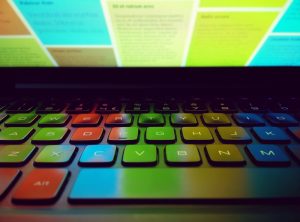7 Capture and manage all ideas

I get ideas occurring to me at all times of the day and night. Many have little value, but just as many are quite valuable to me. The challenge is to capture them all in a way that I can retrieve and make use of them at the right time to capitalize on my brilliance. I find that I receive some of the best ideas when my attention is focused on something totally unrelated or when I am relaxed and letting my mind wander. Do you ever get ideas come to you when you are relaxed, like in the shower or just waking up and find that if you don’t capture them, you lose them, forever? This is pretty common.
One of the best books I have read that helped me learn how to do this is David Allen’s book Getting Things Done. The key principle that I learned from this book was that I need to have a system for capturing ideas when they occur to me before they disappear. This system will work best if I can trust that I will be able to retrieve that idea when needed, which will allow me to clear my mind of that idea and focus on the current tasks at hand. I found that capturing the ideas was easy, but coming up with a way to manage the ideas so I can retrieve them was a challenge.
. . . . .
Write down the thoughts of the moment. Those that come unsought are commonly the most valuable. — Frances Bacon
by Robert Epstein, Steven M. Schmidt, and Regina Warfel. University of California, San Diego –
Robert Epstein promotes this principle quite a bit in many of his writings and encourages us to “…find places and times where new ideas can be observed easily, use dreams and daydreams as sources of ideas and always keep a recording device by your bed at night.” See Measuring and Training Creativity Competencies: Validation of a New Test by Robert Epstein, Steven M. Schmidt, and Regina Warfel. University of California, San Diego
I have tried many methods for capturing ideas and managing them so I can retrieve them when needed. Some of these included using small pocket-sized notebooks, computer programs, pocket computers, tablets and smart phones. I am currently using a combination of Google Keep and Google Docs for this and it is working very well for me. They are not perfect so I am always on the lookout for better ones. How do you capture your ideas and retrieve them?

Google Keep is a free cloud-based note making and management system to do the following:
- capture ideas and notes as they occur using either my smart phone, tablet or computer
- it allows me to capture ideas as text, images, photos, audio recordings, or hand drawings
- I can tag the ideas for easy retrieval
- Share lists of ideas with other people
- I don’t have to do much management of the collection, which is good because I won’t
- there is a powerful search function to retrieve the ideas when required
- the collections of notes and ideas are synchronized to all of my devices automatically so I can use any device that I have at hand to retrieve and I have everything backed up all the time.
- the notes can be easily transferred to a Google Document for more longer-term storage or be integrated into plans, reports or other documents.
I can also schedule reminders for to-do lists and incorporate them into my Google calendar. This allows me to easily access my task lists when I need them. Although I am now working with Google Tasks to manage my task lists.
Evernote

Evernote is a free (for basic level) cloud based note making and management system that I used to use that has many of the same features as Google Keep but without the integration into other Google Apps.
I realize that each of us need to develop our own personalized system for this that will be compatible with our life and working styles. There are many different systems available to meet everyone’s style and need. Try Google Keep, Evernote or some other idea or note capturing and management system to see if one of them will work for you.
. . . . .
Watch the video below and look for ways you can use doodling to capture ideas.
Sunni Brown: Doodlers, unite! https://youtu.be/7fx0QcHyrFk
Using my systems over the past couple of decades has helped me to be a very successful professional in my field. Good ideas are worth their weight in gold when captured and retrieved so they can be applied to solve a critical problem or meet an unmet need. Have you had the experience where you came up with a valuable idea at the right time to contribute to a success? How did you feel about doing that? For me, it is one of the best feelings you can have in the workplace.
Some professionals don’t rely on recording systems to capture their ideas, but rather they just wing-it and rely on their memories to retrieve the right idea at the right time. Do you know anyone that claims to do this? Are they successful at it?
For myself, I could still make improvements to my system. For example, I know that some of my ideas get buried in the large volume of ideas that I have accumulated over time. I need to take the time on a regular basis to organize the ideas for easy retrieval. There are plenty of books available to help us learn how to do this better. One example for Google Keep is called: Keep Getting Stuff Done: 7 action items for teachers, students, parents, (anyone really) on using Google Keep effectively and one for Evernote is called: Evernote: The unofficial guide to capturing everything and getting things done.
What is preventing you from capturing all of your ideas so you can retrieve and create value from them?
What are some ways that would be effective for you to capture the ideas you encounter?
Challenge:
Start keeping a journal and document your thoughts, reflections, questions and ideas as they occur to you while you are studying this book. Share your journal entries with a friend to give you encouragement and feedback. This will help you take it seriously and implement the principles in this book more successfully.
Always keep a notebook handy. You never know when inspiration will strike.

